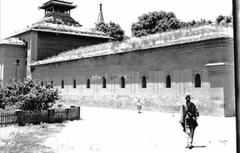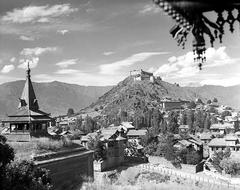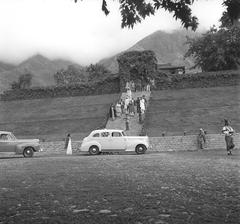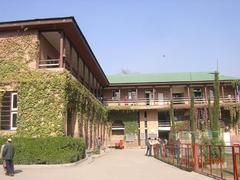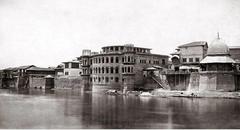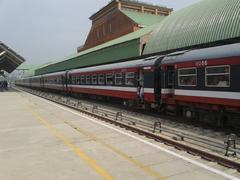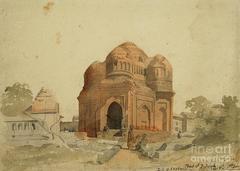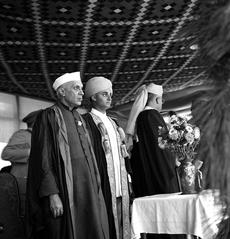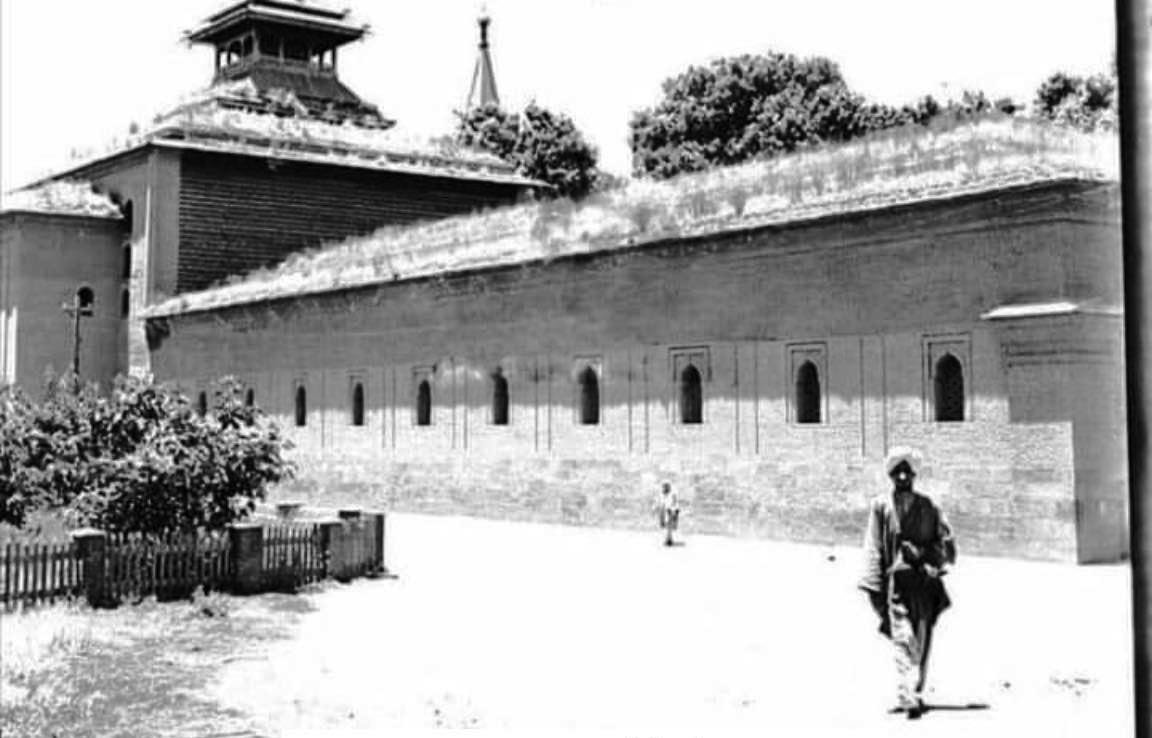
Jamia Masjid Srinagar Visiting Hours and Tickets
Date: 18/07/2024
Introduction
The Jamia Masjid in Srinagar, Kashmir, stands as a monumental testament to the region’s rich history, architectural brilliance, and cultural significance. Constructed in 1394 CE by Sultan Sikandar, the mosque has weathered centuries of political upheavals and natural calamities, only to emerge each time as a symbol of resilience and faith. Nestled in the heart of Srinagar, the Jamia Masjid is not merely a place of worship; it is a vibrant hub of community life, a center of socio-political discourse, and a guardian of traditional Kashmiri craftsmanship (source). The mosque’s Indo-Saracenic architecture, with its intricate wooden pillars, expansive courtyards, and beautiful domes, reflects a harmonious blend of Persian, Central Asian, and local Kashmiri artistic influences. The Jamia Masjid continues to attract visitors from around the world, offering an immersive experience that transcends mere sightseeing to evoke a profound connection with the soul of Srinagar (source). Whether you are an architecture enthusiast, a history buff, or simply a curious traveler, the Jamia Masjid promises a memorable journey through time and culture.
Table of Contents
- Introduction
- Historical Significance of Jamia Masjid
- Architectural Features
- Cultural Significance
- Visitor Information
- Special Events and Guided Tours
- Photographic Spots
- Nearby Attractions
- FAQ
- Conclusion
Historical Significance of Jamia Masjid
Early Beginnings and Mughal Patronage (14th - 18th Century)
The mosque’s foundation was laid in 1394 CE by Sultan Sikandar, marking the advent of Islam as a prominent faith in the region. During the Mughal era, the Jamia Masjid truly blossomed. Mughal emperors, known for their architectural grandeur, saw the mosque’s potential as a symbol of their power and their commitment to Islam. Emperor Jahangir, captivated by the beauty of Kashmir, expanded the mosque, adding adjacent structures. His son, Shah Jahan, renowned for commissioning the Taj Mahal, further magnified its splendor, bestowing upon the mosque its iconic Deodar timber pillars and expansive courtyards.
A Center of Faith and Community
Throughout its existence, the Jamia Masjid has been more than just a place of prayer. It evolved into a vibrant hub for the community, a nucleus where religion intersected with social life. The mosque’s vast courtyard, capable of accommodating thousands, became a stage for Friday sermons that resonated with the socio-political climate of the times. Religious scholars and preachers found a platform within its hallowed halls, disseminating knowledge and interpretations of Islamic teachings.
Challenges and Resilience (18th - 20th Century)
The Jamia Masjid’s journey hasn’t been without its share of trials. As Kashmir witnessed power struggles and political upheavals, the mosque found itself at the heart of some conflicts. Fires, both accidental and deliberate, ravaged its structure multiple times. Yet, like a phoenix rising from the ashes, the mosque was rebuilt each time, a testament to the unwavering faith and determination of the people.
The Jamia Masjid Today - A Symbol of Hope and Heritage
Today, the Jamia Masjid stands tall, a majestic symbol of resilience and faith. Its historical significance is recognized globally, attracting visitors and historians alike. The mosque continues to be a place of active worship, its serene ambiance offering a sanctuary for prayer and reflection. The echoes of history resonate within its walls, whispering tales of empires and faith, of struggles and triumphs.
Architectural Features
Layout and Structure
The mosque follows a traditional Jami Masjid layout, designed to accommodate large congregations.
- Courtyard: A vast open courtyard forms the heart of the mosque, enclosed by grand colonnades on all sides. This central space serves as a gathering area for worshippers and a transition point to the prayer hall.
- Prayer Hall: The main prayer hall, located on the western side of the courtyard, is a grand structure supported by massive deodar pillars. Its expansive size and intricate design highlight its importance as the mosque’s central space.
Majestic Deodar Pillars
One of the most striking features of the Jamia Masjid is its extensive use of deodar wood, a locally sourced timber known for its durability and resistance to decay.
- Number and Arrangement: 370 intricately carved deodar pillars support the structure, particularly within the prayer hall. These pillars are arranged in rows, creating a sense of grandeur and spaciousness.
- Carvings and Craftsmanship: The pillars are not merely structural elements but works of art in themselves. Each pillar boasts intricate carvings of floral motifs, calligraphy, and geometric patterns.
Arches and Domes
The mosque’s profile is punctuated by a series of graceful arches and domes, adding to its visual appeal and spiritual ambiance.
- Central Dome: A prominent central dome rises above the main prayer hall, symbolizing the heavens and creating a sense of awe and reverence.
- Smaller Domes: Flanking the central dome are several smaller domes, adding to the mosque’s architectural rhythm and visual interest.
- Pointed Arches: The mosque features numerous pointed arches, a characteristic element of Islamic architecture. These arches, often adorned with intricate details, add to the building’s verticality and elegance.
Minarets - A Blend of Styles
The mosque’s minarets, tall slender towers used to call the faithful to prayer, exemplify the fusion of architectural styles.
- Height and Structure: The four minarets, each reaching a significant height, stand at the corners of the mosque’s perimeter. They are constructed with a combination of brick and wood, reflecting the local building traditions.
- Pagoda Influence: The minarets’ design incorporates elements of pagoda architecture, a testament to Kashmir’s historical connections with Central Asia.
Gardens and Water Features
Adding to the mosque’s tranquility and beauty are its surrounding gardens and water features.
- Char Bagh: The courtyard features a traditional Char Bagh (four gardens) layout, a Persian garden design representing paradise. These gardens, once filled with flowers and fountains, contributed to the mosque’s serene atmosphere.
- Ablution Fountain: A large ablution fountain, used for ritual cleansing before prayer, is located in the courtyard.
Decorative Elements
Beyond its structural components, the Jamia Masjid is adorned with various decorative elements that enhance its beauty and spiritual significance.
- Calligraphy: Verses from the Quran, rendered in elegant calligraphy, adorn the mosque’s walls, arches, and pillars.
- Geometric Patterns: Intricate geometric patterns, a hallmark of Islamic art, are found throughout the mosque.
- Floral Motifs: Delicate floral motifs, carved into the wooden pillars and stonework, add a touch of natural beauty to the mosque’s interior.
Cultural Significance
A Center of Faith and Identity
The Jamia Masjid stands as a powerful symbol of Kashmiri identity. Beyond its religious significance, it has been deeply intertwined with the political landscape of Kashmir. Throughout history, its towering minarets have witnessed periods of both peace and unrest. The mosque has served as a platform for political mobilization, with Kashmiri leaders using its pulpit to voice their concerns and aspirations.
A Hub of Social and Economic Activity
The mosque’s location in Nowhatta, the heart of old Srinagar, makes it a bustling center of social and economic activity. The surrounding bazaar is a vibrant tapestry of shops and stalls selling everything from traditional Kashmiri handicrafts and spices to everyday necessities.
A Guardian of Traditional Craftsmanship
The mosque itself is a testament to the rich artistic heritage of Kashmir. Its construction, primarily using traditional materials like wood and brick, showcases the exquisite craftsmanship of Kashmiri artisans.
Visitor Information
Visiting Hours and Tickets
- Opening Hours: The Jamia Masjid is open to visitors from 9 AM to 7 PM daily. The best time to visit is during the early morning or late afternoon to avoid the rush.
- Ticket Prices: Entry to the Jamia Masjid is free, but donations are encouraged to help with the upkeep and maintenance of the mosque.
- Accessibility: The mosque is accessible to all visitors. However, it is advisable to dress modestly out of respect for religious customs.
Travel Tips
- Best Times to Visit: The spring and autumn months are ideal for visiting Srinagar and the Jamia Masjid due to the pleasant weather.
- Nearby Attractions: While visiting the Jamia Masjid, consider exploring other nearby historical sites such as the Shankaracharya Temple and the Mughal Gardens.
Special Events and Guided Tours
The Jamia Masjid hosts special religious events and festivals, especially during Ramadan and Eid. Guided tours are available for those interested in a more in-depth understanding of the mosque’s history and architecture.
Photographic Spots
The mosque’s expansive courtyard and intricate wooden pillars offer excellent opportunities for photography. The best time for capturing stunning photographs is during the golden hours of sunrise and sunset.
Nearby Attractions
- Shankaracharya Temple: Located on a hilltop, this ancient temple offers panoramic views of Srinagar.
- Dal Lake: Famous for its houseboats and Shikara rides, providing a serene escape.
- Mughal Gardens: The famous Mughal Gardens, such as Shalimar Bagh and Nishat Bagh, are a short drive from the mosque.
FAQ
- What are the visiting hours of Jamia Masjid? The mosque is open from 9 AM to 7 PM daily.
- Is there an entry fee for Jamia Masjid? Entry is free, but donations are encouraged.
- Are guided tours available? Yes, guided tours can be arranged for a more detailed exploration of the mosque.
- What is the best time to visit? Spring and autumn are the best times to visit due to the pleasant weather.
Conclusion
The Jamia Masjid in Srinagar is a must-visit for anyone interested in history, architecture, and culture. Its rich past and vibrant present make it a unique destination. Plan your visit and immerse yourself in the beauty and heritage of this iconic mosque. For more updates on travel and historical sites, follow us on social media and download our mobile app Audiala.
References
- Visiting Jamia Masjid in Srinagar - History, Hours, and Tickets, 2024, TravelCafe source
- Exploring the Architectural Marvels of Jamia Masjid - Visiting Hours, Tickets, and More, 2024, HeritageSites source
- Visiting Jamia Masjid in Srinagar - History, Tickets, and Cultural Impact, 2024, HeritageSites source
